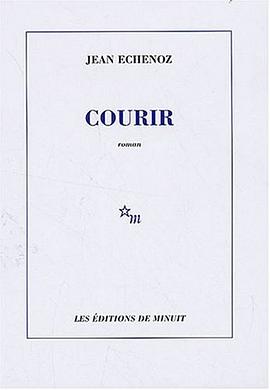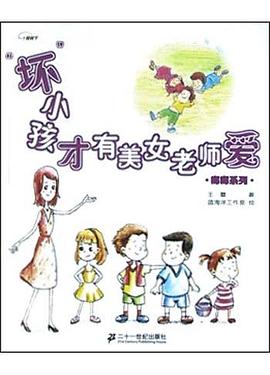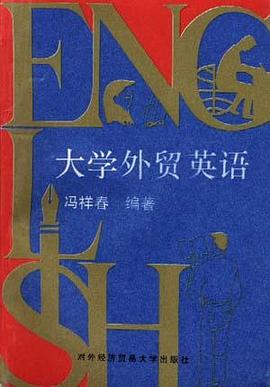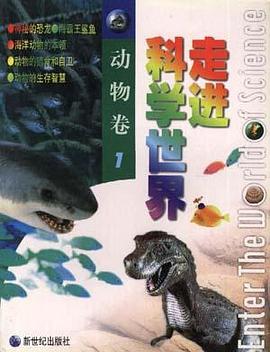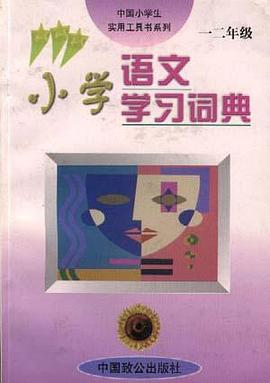BRlEF CONTENTS
PART l PRELlMlNARlES
1 What Is Economics?
2 Scarcity, Choice, and Economic Systems
3 Supply and Demand
PART ll MlCROECONOMlCS: FUNDAMENTAL
CONCEPTS
4 Elasticity: Concept and Use
5 Consumer Choice
6 Production and Cost
7 How Firms Make Decisions: Profit Maximization
PART lll PRODUCT MARKETS
8 Pure Competition
9 Monopoly
10 Monopolistic Competition and Oligopoly
PART IV INPUT MARKETS
l l The Labor Market
12 Income Inequality
13 Markets for Capital and Natural Resources
PART V EFFlClENCY AND THE ROLE
OF GOVERNMENT
14 Economic Efficiency and the Comperitive Ideal
l5 Government's Role in Economic Efficiency
PART Vl MACROECONOMlCS:
BASlC CONCEPTS
16 What Macroeconomics Tries to Explain
l7 Production, Income, and Employment
18 The Monerary System, Prices, andIinflation
PART Vll LONG-RUN MACROECONOMlCS
19 The Classical Long-Run Model
20 Economic Growth and Rising Living Standards
PART Vlll SHORT-RUN MACROECONOMlCS
21 Booms and Recessions
22 The Short-Run Keynesian Model
PART IX MONEY, PRlCES. AND FLUCTUATlONS
23 The Banking System and the Money Supply
24 The Money Market and the Interest Rate
25 Aggregate Demand and Aggregate Supply
PART X MACROECONOMlC POLlCY
26 Inflation and Monetary Policy
27 Fiscal Policy: Taxes, Spending and the Budget Deficit
PART Xl THE INTERNATlONAL ECONOMY
28 Comparative Advantage and the Gains from Trade
29 Exchange Rates and Open-Economy Macroeconomics
Mathematical Appendix
Glossary
Index
Photo Credits
CONTENTS
PART
PRELlMlNARlES
1 WHAT IS ECONOMlCS? l
Myths about Economics
Economics, Scarcity, and Choice
Scarcity and the Individual Scarcity and Societv 3
Scarcity and Economics
The World of Economics
Microeconomics and Macroeconomics Positive and
Normative Economics Fields of Economics 6
Why Study Economics?
To Understand the World Better To Gain Self-
Confidence To Achieve Social Change To Help
Prepare for Other Careers To Become an Economist 9
The Methods of Economics
The Art of Building Economic Models Assumptions
and Conclusions Two Fundamental Assumptions
A Few Words on Macroeconomics Choosing among
Theories
"How Much Math Do l Need?"
The Basic Principles of Economics
How to Study Economics
2 SCARClTY, CHOlCE,
AND ECONOMlC SYSTEMS
The Concept of Opportunity Cost
Opportunity Cost for Individual
and Society
The Principle of Opportunity Cost
Production Possibilities Frontiers Th Search fo a Fre
Lunch
Economic Systems
Specialization and Exchange Resource Allocation
Resource Ovvnership Types of Economic Systems
Using the Theory: Opportunity Cost and the Internet
3 SUPPLY AND DEMAND
Markets
The Size of the Market
Competition in Market
Opportunit Cost
Demand
Price and Quantity Demanded The Demand Schedule
and the Demand Curve Changes in Demand
Supply
Price and Quantitv Supplied The Supplv Schedule and
the Supply Curve Changes in Supply
Putting Supply and Demand Togethe
What Happens When Things Change?
The Principle of Markets and Equilibrium
A Myth about Supply and Demand
Government Intervention in Markets
Price Ceilings Price Floors Supply and Demand
and Normati 'e Economics
Using the Theory: Anticipating a Pricc Change
MlCROECONOMlCS: FUNDAMENTAL CONCEPTS
4 ELASTlClTY:
CONCEPT AND USE
Price Elasticity of Demand
The Problem with Using Slope The Elasticity Approach
Calculating Price Elasticity of Demand Categoriz-
ing Goods by Elasticity Elasticity of Srraight-Line
Demand Curves Elasticity and Total Expenditure 81
Determinants of Elasticity Using Price Elasticity of
Demand: The War on Drugs The Basic Principle of
Policy Tradeoffs
5 CONSUMER CHOlCE
The Budget Constraint
Changes in the Budget Line
Consumer Preferences
Early Insights Rationality Tastes
Consumer Decision Making
What Happens When Things Change?
Changes in Income l16 Changes in Price
Consumers in Markets
From Individual to Market Demand
Challenges to Consumer Theory
Using the Theory: Improving Education
Appendix: Consumer Theory with Indifference Curves
The Indifference Map The Marginal Rate of
Substitution Consumer Decision Making
Indifference Curves and the Individual Demand
Curve
6 PRODUCTlON AND COST
Other Demand Elasticities
Income Elasticity of Demand
Demand
Cross-Price Elasticity of
Price Elasticity of Supply
Using the Theory: The Problem with Food
The Nature of the Firm
Types of Business Firms
Limits to the Firm
Why Employees? The
Inputs and Outputs
The Short Run and the Long Run
Production in the Short Run
Total, Marginal, and Average Product Marginal
Returns to Labor Graphing Product Curves The
Total-Marginal Relationship The Average-Marginal
Relationship
Cost in the Short Run
Thinking about Costs Measuring Short-Run
Costs The Relationship between Average and
Marginal Costs Time ro Take a Break
Production and Cost in the Long Run
The Relationship between Long-Run and Short-Run
Costs Average Cost and Plant Size Explaining
the Shape of the LRATC Curve
Using the Theory: Cost Curves and
Economic Reform in Russia
7 HOW FlRMS NAKE DEClSlONS:
PROFlT MAXlMlZATlON
The Goal of Profit Maximization
Understanding Profit
Two Definitions of Profit
A Myth about Profit
Why Are There Profits?
The Profit-Maximizing Output Level
Constraints on Revenue and Cost Total Revenue
Total Cost The Total Revenue and Total Cost
Approach The Marginal Revenue and Marginal Cost
Approach Profit Maximization Using Graphs
What about Average Costs? The Importance of
Marginal Decision Making: A Broader View Dealing
with Losses: The Shutdown Rule
The Goal of the Firm Revisited
The Principal-Agent Problem The Principal-Agent
Problem at the Firm The Assumption of Profit
Maximization
Using the Theory: Getting It
Wrong and Getting It Right
Getting It Wrong: The Failure of Franklin National
Bank Getting It Right: The Success of Continental
Airlines
PART lll
PRODUCT MARKETS
8 PURE COMPETlTlON
The Notion of Competition
What Is Pure Competition?
The Purely Competitive Firm
The Demand Curve Facing a Competitive Firm Cost
and Revenue Data for a Competitive Firm Finding the
Profit-Maximizing Output Level Measuring Total
Profit The Firm's Short-Run Supply Curve
Competitive Markets in the Short Run
The (Short-Run) Market Supply Curve Short-Run
Equilibrium
Competitive Markets in the Long Run
Profil and Loss and the Long Run Long-Run
Equilibrium Distinguishing Short-Run from Long-Run
Outcomes The Notion of Zero Profit in Pure
Competition Pure Competition and Plant Size
A Summary of the Competitive Firm in the Long Run
What Happens When Things Change?
Constant-Cost Industries Increasing-Cost Industries
Decreasing-Cost Industries Changes in Demand:
A Summary
Using the Theory: Changes in Technology
9 MONOPOLY
What Is a Monopoly?
The Origins of Monopoly
Economies of Scale Control of Scarce Inputs
Government-Enforced Barriers
The Single-Price Monopoly
Price and Output Decisions of a Single-Price Monopoly
Profit and Loss Monopoly in the Short Run
Monopoly in the Long Run 245 Comparing Monopoly to
Pure Competition Why Monopolies Often Earn Zero
Economic Profit
Myths about Monopoly
Price Discrimination
Requirements (or Price Discrimination Effects of Price
Discrimination
The Demise of Monopoly
Using the Theory: Price Discrimination
at Colleges and Universities
lO MONOPOUSTlC
COMPETlTlON AND
OUGOPOLY
The Concept of Imperfect Competition
Monopolistic Competition
Monopolistic Competition in the Short Run
Monopolistic Competition in the Long Run Excess
Capacity under Monopolisric Competition Nonprice
Competition
Oligopoly
Oligopoly in the Real World Why Oligopolies
Exist Oligopoly Behavior Cooperative Behavior
in Oligopoly The Limits to Oligopoly
Using the Theory: Advertising in
Monopolistic Competition and Oligopoly
Advertising and Market Equilibrium under Monopolisric
Competition Advertising and Collusion in
Oligopoly
The Four Market Structures: A Postscript
PARTIV
INPUT MARKETS
11 THE LABOR MARKET
Rcsourc' Markcts in Gencral
Labor Markcts in Particular
Del'imng a Lahor M.arket Compertitiv Lahot
Markcts
Dcmand for Labor by a Singlc Finn
The Firm's Employment Deeision when Only labor
Variable 299 The Fmployment Decision when
Several lnputs Are Variable
Thc Markct Demand for l.abor
Shitts in the' Market labor De.mand Curve.
Labor Supply
lndividual l.abor Snpply Market labor Supply Supplv
Shifts in thf Market labor Supplv Curve Short-Run
versus Lonp-Run l.abor Supply
Labor Market Equilibrium
What Happens Whcn Things Change?
A Change in l.abor Demand A Change in l.ahor
Supply Labor Shortages and Surpluses
Using the Theory: Undcrstanding thc Market
for Collcge-Educatcd Labor
12 INCOME
INEQUALlTY
Why Do Wages Diffcr?
An Imaginary World Compensa6ing Difterential.
Barriers to Entry Umon Wage Setting
Discrimination and Wages
Emplover Prejudice Employee and Customer
Preiudice Starisrical Discrimlnation Dealing
with Discrimination Discrimination and Wage
Ditferentials
Mcasuring lncomc Inequality
The Poverty Rate The Lorenz Cur Problem
w'ith inequality Measures
Incomc Inequality, Fairnessd, and Economic
Using the Theory: The Mlnimum Wage
13 MARKETS FOR
CAPlTAL AND NATURAL
RESOURCES
Flovvs versus Stocks
Renral Markets and Assct Market.
Rental Markets for Capital and Natural Resources
Demand for a Resource Supply Market
Equillbrium
Asset Markets for Capital and Natural Resources
Comparing Future Dollars with l'resent Dollars
Capitalizing an Income Stream Purchase Prices of
Natural Resources An Application: l.and Price
Differentials
Nonrenewable Resourccs: Are We Doomed?
A Model of Resource Exhaustion Betting on the
Planet
Interest and the Market for Loanablc Funds
Consumers' Time Preference The Time Productivity of
Producers Nominal interest versus Real Interest
A Firm's Selection of Investmenr Projects The
Loanable Funds Markct
Financial Markets in the Unitcd States
Bonds Stocks, Diversification, and Systematic
Risk Growth and Value Fffident Market
Using thc Theory: A Corporatc Buyout
PART V
EFFlClENCY AND THE ROLE OF GOVERNMENT
14 ECONOMlC EFFlClENCY
AND THE COMPETlTlVE
IDEAL
The Meaning of Efficicncy
Pareto Improvements
Side Payments and Pareto Improvements Potential
Pareto Improvemcnts
The Elements of Efficiency
Productive Effieieney Allocative Etficienq
Eeonomic Efficicncy: A Summary
The Inefficiency of Imperfect Competition
Where Do We Go from Here?
Using the Theory: The Collapse of Communism
15 GOVERNMENT'S
ROLE IN ECONOMlC
EFFlClENCY
The Institutional Infrastructure of a Market Econom
The l.egal Systern Regulation Law and
Regulation in Perspective Taxation
Market Failures
Imperl'ect Competinon
Goods
Externalitie
Publie
Using the Theory: Casc Studics
of Antitrust and Rcgulation
Breaking Up a Monopoly: Alcoa Regulation and
Deregulation: The Airlines Preserving Competition:
Soft Drinks An Ongoing Challenge: Mighty
Microsoft ru
PART Vl
MACROECONOlVllCS: BASlC CONCEPTS
16 WHAT MACROECONOMlCS
TRlES TO EXPLAlN
Macroeconomic Concerns
Rapid Economic Growth High Employment
Stable Prices
The Macroeconomic Approach
Aggregation in Macroeconomics
Macroeconomic Controversies
As You Study Macroeconomics
17 PRODUCTlON, INCOME.
AND EMPLOYMENT
Production and Gross Domestic Product
GDP: A Definition The Expenditure Approach to
GDP Other Approaches to GDP Measuring
GDP: A Summary Real versus Nominal GDP
Thc Importance of Real Values: A Basic Pnnciple
How GDP Is Used Problems with GDP
Employment and Uncmployment
Types of Unemployment The Costs of Unemployment
How Unemplovment is Mleasured Prohlems in
Measuring Unemployment
Using the Theory: Society' Choie of GDP
18 THE MONETARY SYSTEM,
PRlCES. AND INFLATlON
The Monetary System
Historv of the Dollar Why Pap Currency
Accepted as a Means of Pavment
Measuring the Pricc Eevcl and Inflation
Index Numbers The Consumer Price Index
How the CPl Has Behaved From Price Index to
Inflation Rate How the CPl Is Used Real Using the Theory: Is the CPl Accurate?
Variables and Adjustment for Inflation Inflation and Sources of Bias in the CPl The Consequences of
the Measurement of Real GDP Overstating Inflation Will We Change the CPl?
The Costs of Inflation
The inflation Myth The Redistributive Cost of
inflation The Resource Cost of Inflation
Appendix: Calculating the CPl,
the GDP Price Index, and Real GDP
Calculating the Consumer Price Index Calculating the
GDP Price Index Calculating Real GDP
PART Vll
LONG-RUN MACROECONOMlCS
19 THE CLASSlCAL
LONG-RUN MODEL
Macroeconomic Models: Classical versus Keynesian
Assumptions of the Classical View
How Much Output Will We Produce?
The Labor Market Determining the Economy's
Output
The Role of Spending
Total Spending in a Very Simple Economy Total
Spending in a More Realistic Economy Leakages and
Injections The Loanable Funds Market The
Supply of Funds Curve The Demand for Funds
Curve Equilibrium in the Loanable Funds Market
The Loanable Funds Market and Say's Law ,
Money and Prices in the Classical Model
The Demand for Money Monetary Equilibrium
The Classical Model: A Summary
Using the Theory: Fiscal and Monetary
Policy in the Classical Model
An Increase in Government Purchases An Increase in
the Money Supply
20 ECONOMlC GROWTH
AND RlSlNG LlVlNG
STANDARDS
The Importance of Growth
What Makes Economies Grow
Growth in Employment Growth of the Capital
Stock Investment and the Capital Stock
Human Capital and Economic Growth Technological
Change
Economic Growth in the United States
The Cost of Economic Growth
Budgetary Costs Consumption Costs
Opportunity Costs of Workers' Time Sacrifice of
Other Social Goals
Using the Theory: Economic Growth
in the Less Developed Countries
c
PART Vlll
SHORT-RUN MACROECONOMlCS
21 BOOMS AND
RECESSlONS
Can the Classical Model Explain
Booms and Recessions?
Shifts in Labor Demand Shifts in Labor Supply
Verdict: The Classical Model Cannot Explain Booms and
Recessions
Booms and Recessions: A More Realistic View
Opportunity Cost and Labor Supply Firms'
Benefits from Hiring: The Labor Demand Curve
The Meaning of Labor Market Equilibrium The Investment Spending
Labor Market in a Recession The Labor Market in a
Boom Government Purchases
What Triggers Booms and Recessions?
A Very Simple Ecunomy The Real-World
Economy Shocks That Push the Economy Away trom
Equilibrium Job Destruction and Job Creation
The Economics of Slow Adjustment
Adjustment in a Boom Adjustment in a Recession
The Speed of Adjustment
Where Do We Go from Here?
22 THE SHORT-RUN,
KEYNESlAN MODEL
Consumption Spending
The Relationship between Consurnption and Disposable
Income The Relationship between Consumption
and Income Shifts in the Consumption-lncome
Line
Income and Aggregate Expenditure
Finding Equilibrium GDP
Inventories and Equilibrium GDP Finding
Equilibrium GDP with a Graph Equilibrium GDP
and Employment
What Happens When Things Change?
A Change in Investment Spending The Expenditure
Multiplier The Multiplier in Reverse Other
Spending Shocks A Graphical View of the Multiplie
An Important Proviso about the Multiplier
Comparing Models; Classical and Keynesian
The Role of Saving The Effect of Fiscal Policy
Using the Theory: The Recession of 1990-1991
Appendix l: Finding Equilibrium GDP Algebraically
Appendix 2: The Special Case of the Tax Multiplier
PARTIX
MONEY, PRlCES, AND FLUCTUATlONS
23 THE BANKlNG SYSTEM
AND THE MONEY SUPPLY
What Is Counted as Money
Measuring the Money Stock
Assets and Their Liquidity
The Banking System
Financial Intermediaries
A Bank's Balance Sheet
Ml and M2
Commercial Banks
The Federal Reserve System
The Structure of the Fed The Federal Open Market
Committee The Functions of the Federal Reserve
The Fed and the Money Supply
How the Fed Increases the Money Supply ' The
Demand Deposit Multiplier The Fed's Effect on the
Banking System as a Whole How the Fed Decreases
the Money Supply Some Important Provisos about the
Demand Deposit Multiplier 650 Other Tools fo
Controlling the Money Supply 651
Using the Theory: Bank Failures and Banking Panics
24 THE MONEY MARKET AND
THE INTEREST RATE
The Demand for Money
An Individual's Demand for Money The Economy-
Wide Demand for Money
The Supply of Money
Equilibrium in the Money Market
How the Money Market Reaches Equilibrium
What Happens When Things Change?
How the Fed Changes the Interest Rate The Fed in
Action How Do Interest Rate Changes Affect the
Economy? Fiscal Policy (and Other Spending
Changes) Revisited
Curve
Shifts in the Monev Demand
Are There Two Theories of thc Interest Rate?
Using the Theory: Active versus Passive Policy
The Fed's Response to Spending Shocks The Fed'
Response to Changes in Money Demand
25 AGGREGATE DEMAND AND
AGGREGATE SUPPLY
The Aggregate Demand Curve
Undersranding the AD Curve Movement along the
AD Curve Shifrs of the AD Curve
The Aggregate Supply Curve
Prices and Costs in the Short Run Deriving the
Aggregate Supply Curve Movements along the AS
Curve Shifts of the AS Curve
AD and AS Together: Short-Run Equilibrium
What Happens When Things Change?
Demand Shocks in the Short Run Demand Shocks:
Adjusting to the Long Run The Long-Run Aggregate
Supply Curve Supply Shocks
Some I5mportant Provisos about the AS Curve
Using the Theory: The Recession
and Recovery of 1990-92
PART X
MACROECONOMlC POLlCY
26 INFLATlON AND
MONETARY POLlCY
The Objectives of Monetary Policy
Low, Stable Inflation Full Employment
The Fed's Perfonnance
Federal Reserve Policy: Theory and Practice
Responding to Shifts in the Money Demand Curve
The Fed's Response to Spending Shocks Responding
to Supply Shocks
Expectations and Ongoing Inflation
How an Ongoing Inflation Arises Ongoing Inflation
and Monetary Policy The Phillips Curve
Why the Fed Allows Ongoing Inflation
Using the Theory: Conducting Monetary
Policy in the Real World
Information about the Money Demand Curve
Information ahout the Sensitivity of Spending to the Interest
Rate Uncertain and Changing Time Lags The
Natural Rate of Unemployment
27 FlSCAL POLlCY: TAXES,
SPENDlNG, AND THE
BUDGET DEFlClT
Thinking about Spending, Taxes and the Deficit
Government Spending, Taxes, and the
Budget Deficit: Some Background
Government Spending Federal Tax Revenues
The Federal Deficit and the National Debt
A Myth about Financing the Budget Deficit
The Effects of Fiscal Changes in the Short Run
How Booms and Recessions Affect Spending, Taxes,
and the Budget Deficit Countercyclical Fiscal
Policy?
The Effect of Fiscal Changes in the Long Run
A Contrary View: Ricardian Equivalence
Using the Theory: Are We
Headed for a Debt Disaster?
PART Xl
THE INTERNATlONAL ECONOMY
28 COMPARATlVE
ADVANTAGE AND THE
GAlNS FROM TRADE
The Logi of Frec Trade
The Theory of Comparative Advantage
Opportunity Cost and Comparative Advantage
Specialization and World Production Gains trom
lnternational Trade The Terms of Trade
Comparative Advantage: A Graphical lllustration
Complete Specialization Consumption bevond th
Frontier
Turning Potential Gains into Actual Gain
Some lmportant Provisos
The Sources of Comparative Advantag
Why Some People Object to Free Trade
Thelmpact of Trade in the Exporting Country The
[mpa5ct of Trade in the impoi-ting Country Attitude
toward Free Trade: A Summary
How Free Trade Is Restricted
Tariffs Quotas Protectionism
Myths about Free Trade
Sophisticated Argument for Protection
Using the Thcory: Trade
Restrictions in the United State
29 EXCHANGE RATES
AND OPEN-ECONOMY
MACROECONOMlCS
Foreign Exchange Markets and Exchange Rates
Dollars per Pound or Pounds per Dollar?
The Demand for British Pounds
The Demand for Pounds Curve Shifts in the Demand
for Pounds Curve The Demand tor Pounds Curve:
A Summary
The Supply of British Pounds
The Supply of Pounds Curve Shifts in the Supply of
Pounds Curve The Supply of Pounds Curve:
A Summary
The Equilibrium Exchange Rate
What ahout the Market for Dollars?
What Makes Exchange Rates Change?
How Exchange Rates Change over Time Managed
Float Interdependent Markets: The Role of
Arbitrage
Macroeconomics in an Open Economy
Aggregate Expenditure in an Open Economy
Equilibrium Output in an Open Economy Spending
Shocks in an Open Economy Exchange Rates and
Economic Policy
Using the Theory: Understanding
the U.S. Trade Deficit
MATHEMATlCAL APPENDlX MA-l
GLOSSARY G-l
INDEX l-l
PHOTOCREDlTS PC-l
· · · · · · (
收起)



